Bizrate Insights· Author
This post was originally published in June 2019 and was updated in April 2021 with additional data points, updated survey results, and new information.
These days, you don’t order takeout, book a hotel, or buy a product without reading a few reviews first. In fact, 91% of our 2021 survey respondents say they read at least one review before making a purchase decision on a product, business, or service.
Marketers know that online research plays a large role in the modern consumer’s shopping journey, and successful ecommerce brands leverage customer reviews as a valuable sales tool. Positive reviews build a shopper’s trust and have the power to increase sales. While negative reviews could deter first-time customers, they are also seen as proof of credibility—after all, no brand is perfect.
But exactly how do reviews factor into the decision-making process for consumers? To find out, we surveyed more than 1,200 online shoppers to ask about the importance of reviews and how they impact their shopping habits.
How Important are Customer Reviews?
Spoiler alert: they’re important. When given the choice between a coupon or discount, loyalty program, free shipping, or a high review/rating, the top response from online shoppers is that a high rating is the most important factor when deciding on a purchase.
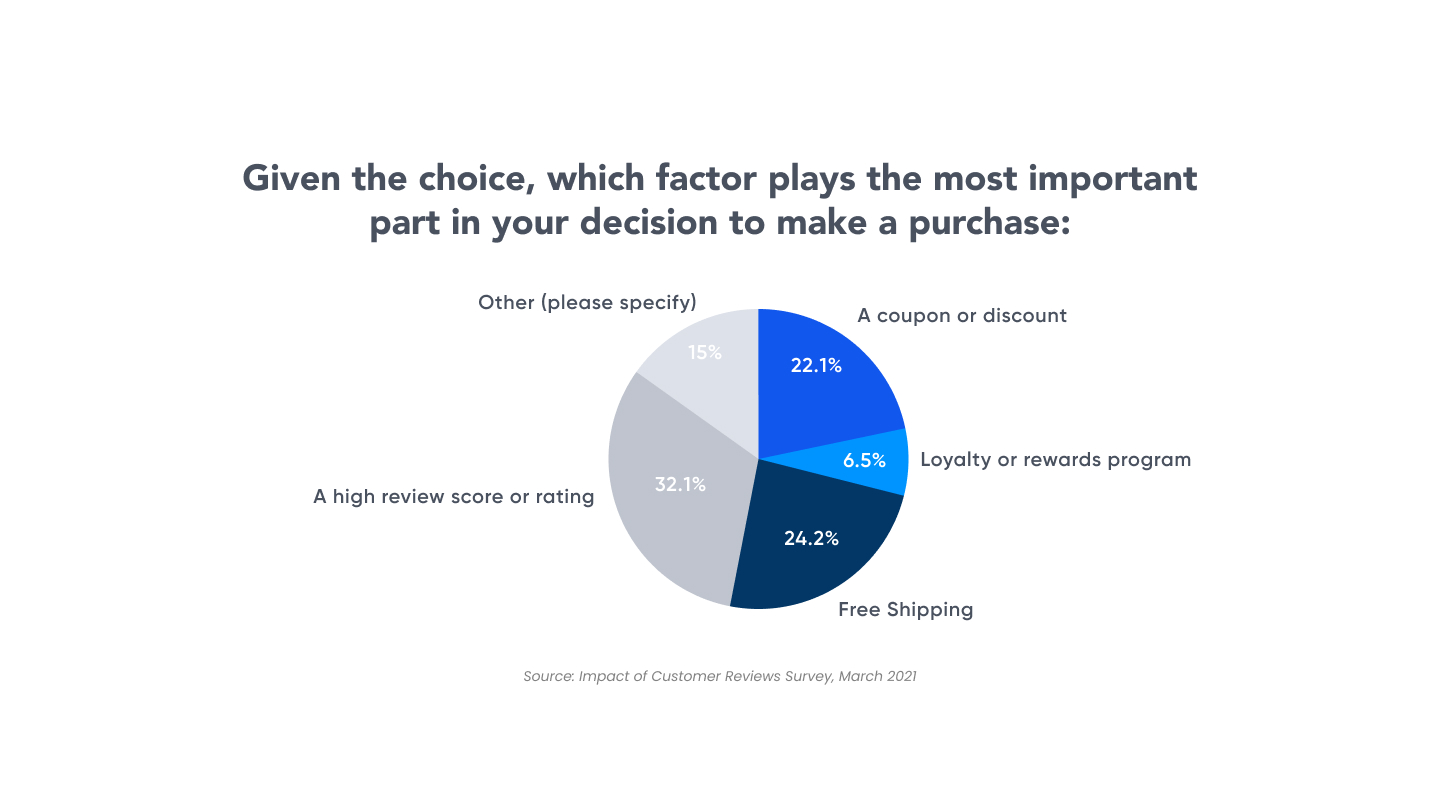
When broken down by age, a high review or rating was the most popular response for respondents age 30-39, 50-54, and 60-64. It was the second most popular response for 18 to 29-year-olds, with the top factor being a coupon or discount.
How Many Reviews Do Shoppers Read?
The majority of shoppers surveyed read between one and ten reviews before making a purchase decision, and 12% say they will read more than 10. Provide the information customers want by diversifying where you display reviews on your website and monitoring the reviews that come in on third-party sites.
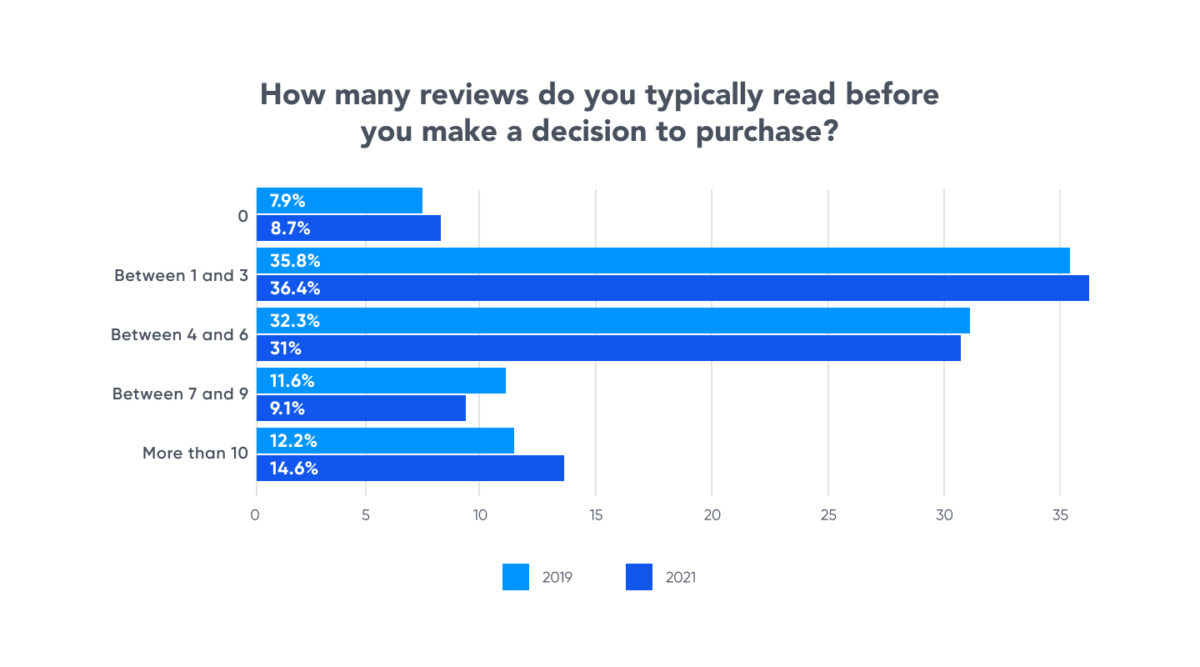
How Many Reviews Do You Need?
According to our results, consumers need to see a certain number of reviews before they trust them. Over 25% of survey respondents only trust a rating if it has between 11 and 50 reviews and 19% of shoppers expect between 51 and 100 reviews.
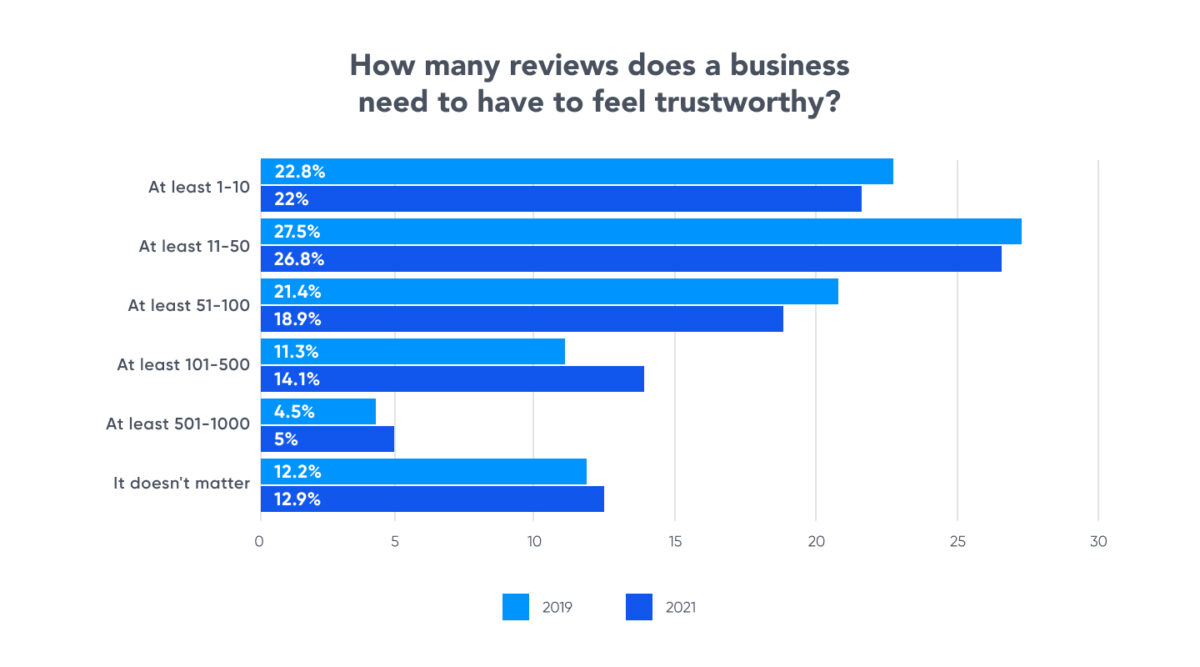
While more reviews can increase a shopper’s trust, it’s also important to have a combination of positive, mediocre, and negative reviews. A 2019 Bizrate survey found that 52% of shoppers said a mix of positive and negative reviews would make them trust the reviews they read.
Learn more about how you can use negative reviews for a positive impact with our free guide, Turn a Negative Review Into a Positive Customer Experience.
Where Do Shoppers Read Reviews?
Since many customers read up to ten reviews before a purchase, chances are they aren’t only reading reviews on your retail website. We asked shoppers which channels they most commonly use to look for customer reviews and the results remained steady over the last few years. Our 2021 results show that Google and Amazon are the most popular channels with 59% and 57% respectively. The most popular write-in responses were YouTube, Reddit, and consumer review sites like the Better Business Bureau or Consumer Reports.
How to Leverage Google Seller Ratings
It’s no surprise that Google is the top destination for customer reviews. Google Seller Ratings allow your company to share a star rating and build shopper trust before they even click through to your site. This is an easy way to make a great first impression since most people will start their research with a Google search and navigate through to look for reviews.
Luckily, if you use Bizrate Insights software, you automatically receive Google Seller Rating syndication as part of our Online Buyer Survey solution. This means that the reviews from your survey are immediately sent to Google to appear below your search results, like the image below.
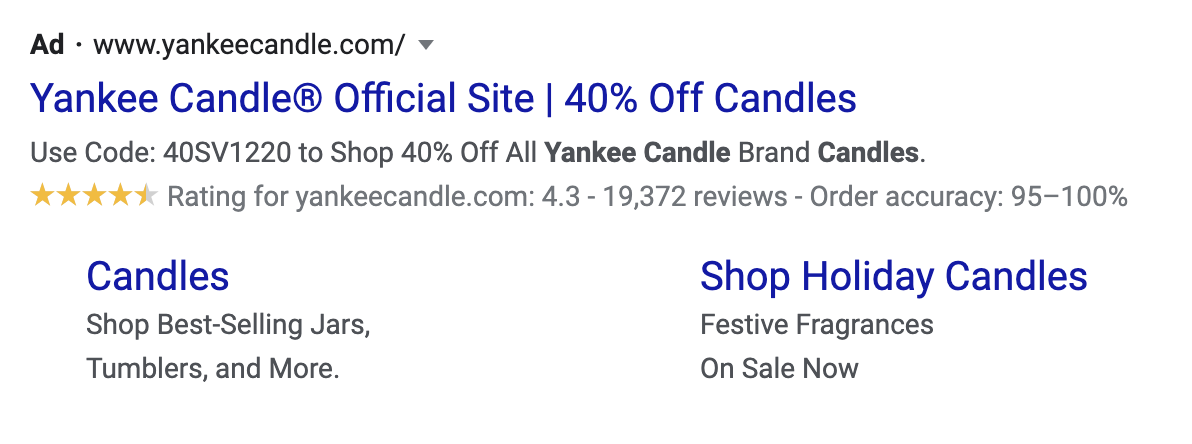
By displaying these ratings directly in Google’s search results, your company is able to set the tone for potential and existing customer’s impression of your brand.
Optimize Reviews on Your Website
Following Google and Amazon, the next most popular channel for reading reviews, at 44%, is the brand’s website. Since almost half of consumers look to your site for feedback information, display verified ratings in several places, including on the homepage and product pages. Maximize the impact of positive reviews by having your marketing team leverage them in customer communications and collateral.
While you should prominently feature reviews on your website, nearly 70% of 2021 respondents say they only “somewhat” trust reviews on a brand’s website. Similar to why they want to see both negative and positive reviews to find a source trustworthy, this is likely because customers think that a brand is controlling what is or is not shown, since they are in control of the site.
Monitor Off-Site Reviews
Since posting customer reviews on your site won’t be sufficient for those who don’t trust retailer site reviews, cover all the bases by engaging with customers (and their reviews) on as many channels as possible.
A few easy ways to own your off-site reviews:
- Syndicate customer reviews to Google Seller Ratings to show up on your search results.
- Actively respond to reviews on third-party review sites like Yelp.
- Prioritize online reputation management by setting up social media alerts and Google Alerts for mentions or backlinks to your site to see if there are round-up articles or in-depth review blog posts featuring your products.
We also asked online shoppers if they trust product reviews from a third party more than reviews from the retailer, and the responses were as follows:
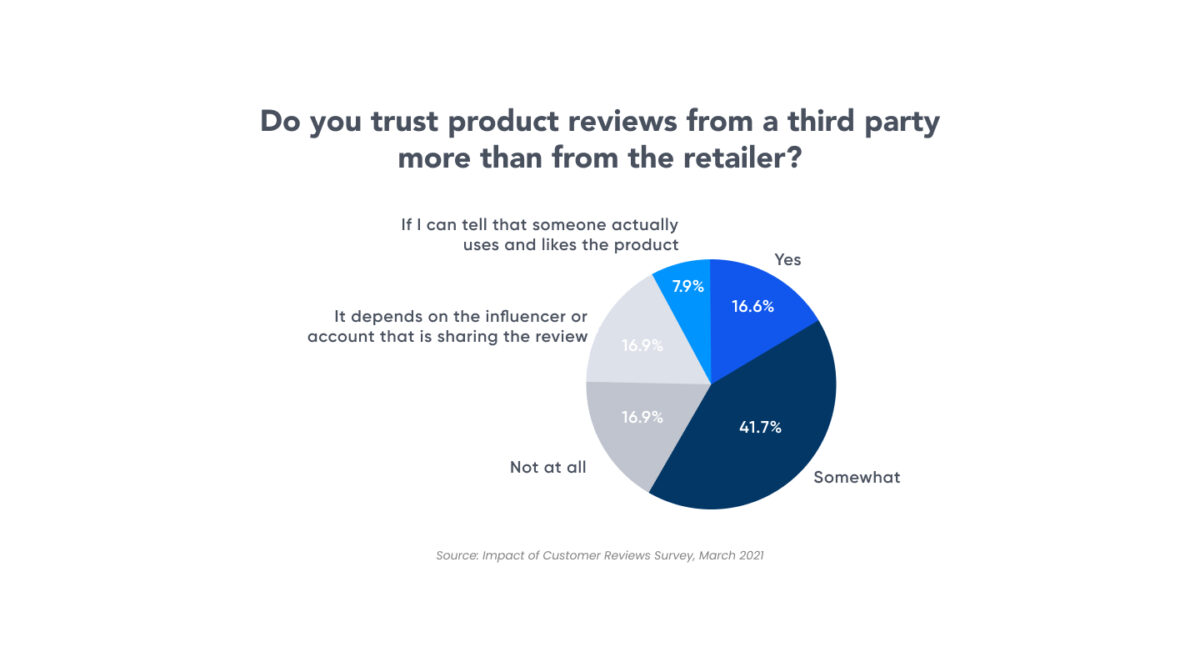
Meet Customers Where They Are
Submitted customer reviews aren’t the only type of feedback out there. Consumers follow brands on social media, read in-depth reviews on blogs and apps, and find new products through their friends, family, and influencers. And on each of these channels, they’re collecting information to form an opinion on your brand.
With so many ways to get to know your business, it’s important to know where your target shoppers are learning about your products so you can optimize those channels first. Look into your website’s referral traffic to find out which channels are driving the most traffic, highest engagement, and visits that result in sales.
Once you know which of your marketing tactics are working, you can start to engage your customers where they already are.
For example, if you know that Instagram drives a good percentage of traffic, but not sales, then you can invest resources to nurture customers on the platform. Since social media is such a large piece of the online shopper’s journey, we asked consumers a few questions about these tactics.
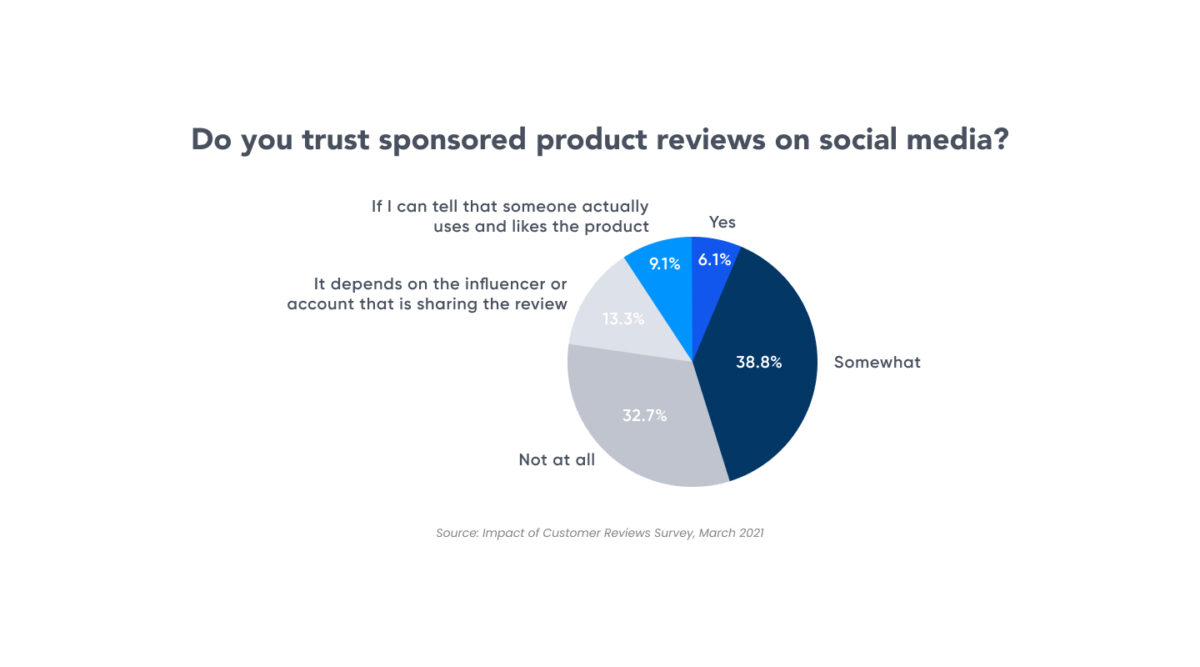
The takeaway here is that for most people, sponsored reviews aren’t the most credible source of information. So, while it can be useful to invest money to have an influencer post sponsored content to reach new customers and increase awareness, keep in mind that it won’t necessarily result in strong trust or immediate sales.
Finding the right influencer to fit your audience can take time and resources, and even if you find a personality with the right demographics, it doesn’t always result in enough ROI to be worthwhile. Before you invest money in an influencer campaign, try to strengthen your relationship with your followers on your brand’s page to earn their trust organically.
Once you feel confident in your understanding of your audience, your team can weigh the risks and benefits of an influencer campaign to determine if it’s the right fit for your goals.
Engage on Social Media
Overall, social media is a great platform to engage and nurture followers. You can move consumers from the brand awareness stage (they know who you are) to brand trust (they appreciate your company’s content and mission), and from product awareness (they know you have products) to trust in your product (they believe you have a quality product they’re interested in).
Here are a few tips to nurture customers on social media and increase trust in your brand and products:
- Be active on your top platforms and post more than well-posed product shots. Show behind-the-scenes images, footage of your team at work, and stream live stories where customers can ask questions or interact with your team.
- Maintain a quick response time to as many comments and direct messages as you can—both positive and negative. Responding to negative comments is crucial and if you demonstrate a transparent, empathetic, and helpful response to unhappy customers, then others will see that you are dedicated to providing a positive experience and have trust in your product. A positive response to a negative review can turn around an individual’s experience with your brand and also publicly demonstrate your dedication to customer satisfaction.
- Build rapport with your followers by engaging with customers who leave positive messages to show that you appreciate their business and aren’t only interacting with the mission-critical negativ comments.
- Maintain transparency to build trust with customers and target shoppers. If you make a mistake, address it head-on. Share stories about your missteps or struggles to humanize your company and remind consumers that you’re just a team of people doing your best. This can help soften the blow if a customer has a poor experience and encourage them to reach out directly to your team for resolution instead of publicly bashing you with a negative review.
Listen to Your Customers
Customer reviews are an important tool for your sales and marketing efforts, so make sure you’re maximizing their impact. Display reviews on your website, monitor your off-site reviews and online reputation, quickly respond to positive and negative reviews, and engage customers organically on social media.
Yes, reviews are a useful tool in building trust and generating sales, but above all, customer reviews are an invaluable source of insight into your customers’ expectations and needs. In order to find out what your customers like and don’t like about your CX and products, they need to feel compelled to tell you.
Use Bizrate to Earn More Customer Reviews
Bizrate’s Online Buyer Survey is an effective way to encourage customers to write reviews since we have one of the highest survey response rates in the industry. Our survey is only offered to verified buyers and collects feedback at the point-of-sale and post-fulfillment. This allows customers to comment on their entire journey with you, from product selection to product quality, website UX to shipping speed.
Since companies often see online reviews from the most unsatisfied customers who are only looking to complain rather than find a solution, we incentivize your customers to ensure you receive feedback from a wider range of shoppers, versus only those who are extremely satisfied or dissatisfied.
Schedule a call with our team to find out how Bizrate Insights can help you gain more customer feedback and identify the key voice of customer insights to help you make important customer experience improvements.
